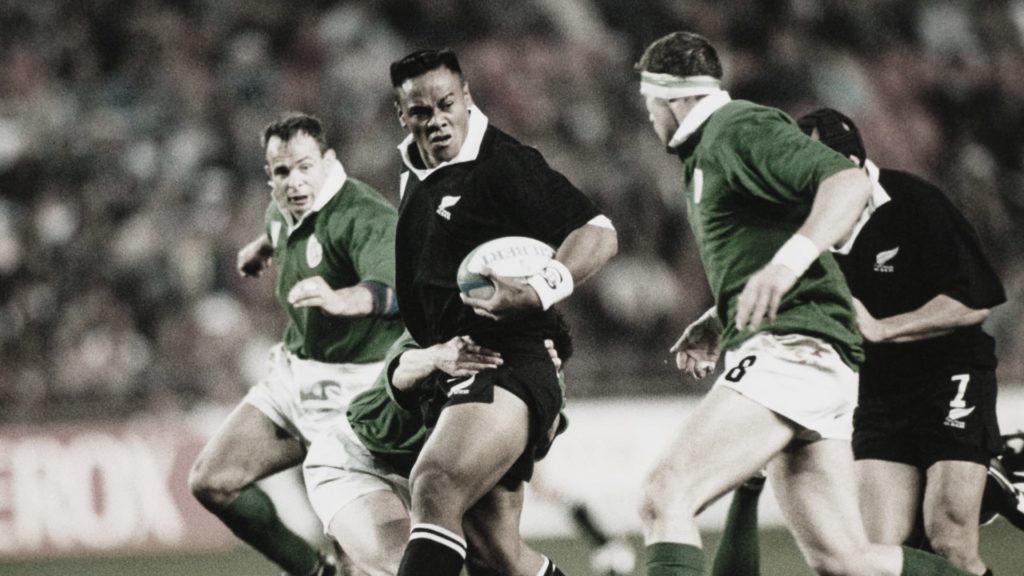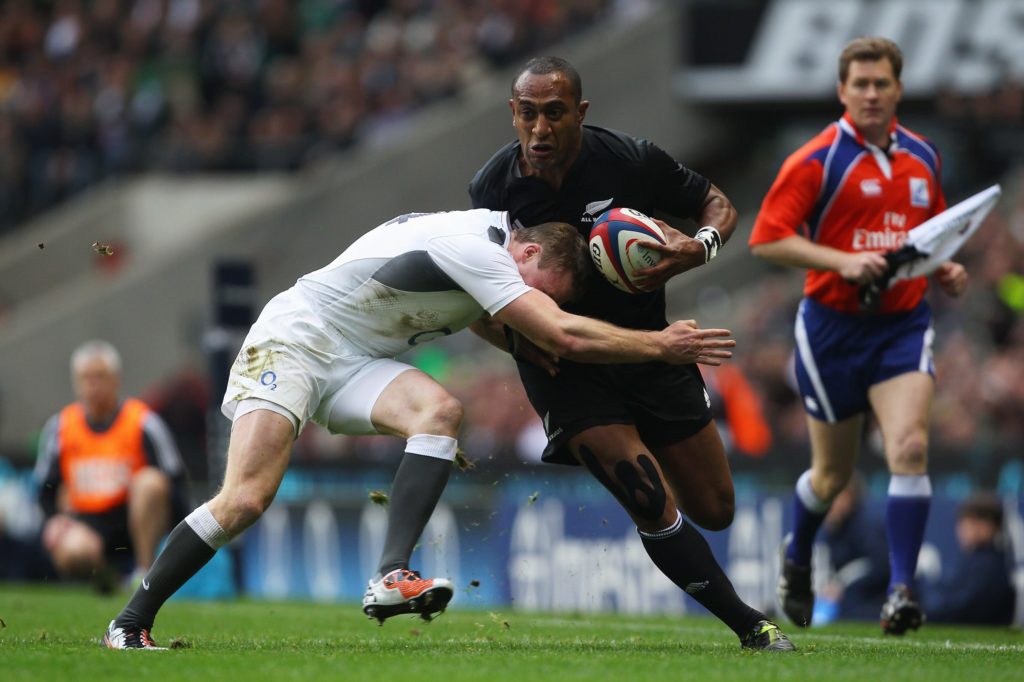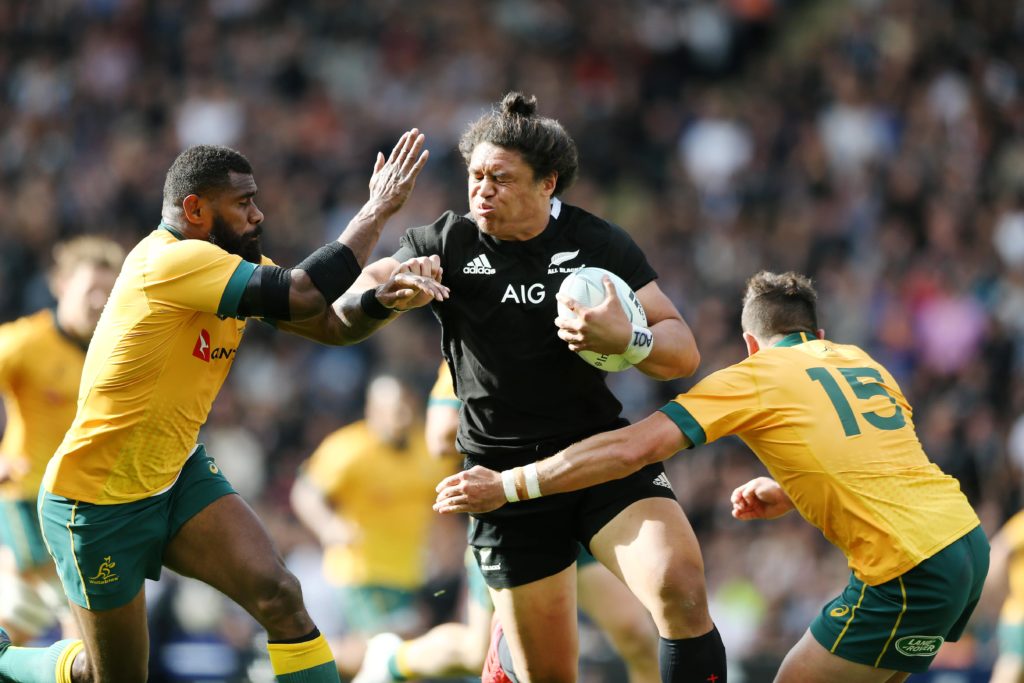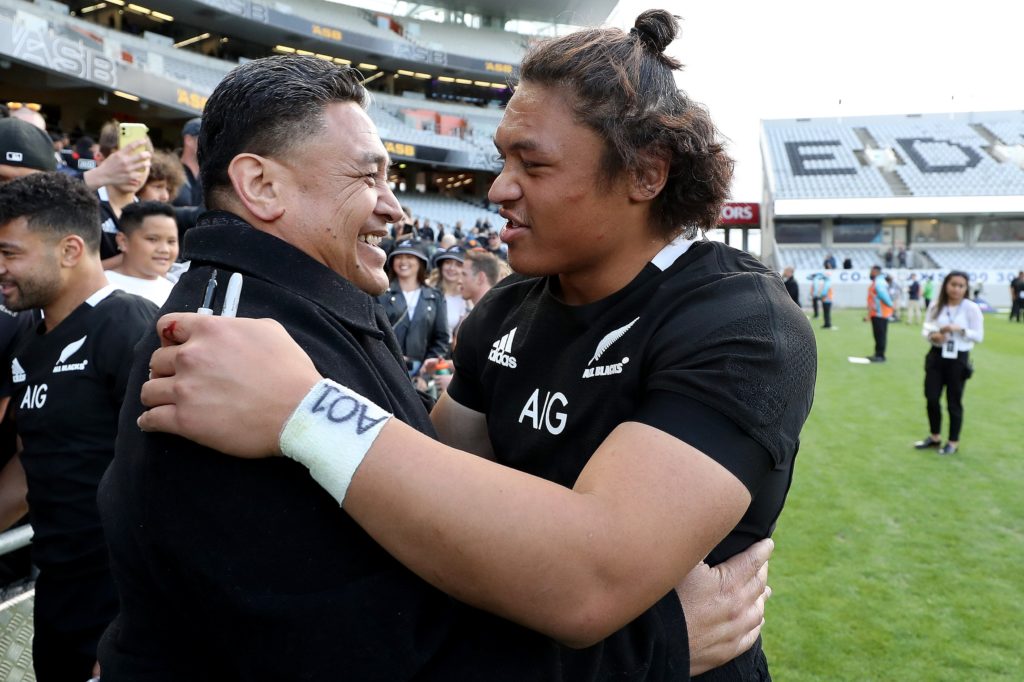Expectation has been a killer of dreams for All Blacks wings destined to rewrite history after making the most dramatic impacts in their early test careers.
That, and who knows what else? Age maybe. Complacency, illness, diet, lack of application, bad attitude and changing demands of the game.
All of these, in some combination or another, have been responsible for ensuring that the All Blacks have a long list of wings who have ultimately failed to deliver on the early promise they showed.
Or at least only managed to keep their star in the ascendancy for a few years. It’s a strange phenomenon, peculiar to New Zealand certainly, that they keep unearthing these explosive young wings who typically score at about a try per game in their late teens or early 20s and then fade as quickly as they arrived.
In every country there comes a mystique or glamour attached to the No 10 jersey. In some places that extends to the No 7, but only in New Zealand is there a depth of history now plugged into the All Blacks No 11 jersey which creates a whole different world of pressure for those asked to wear it.
And now that a new force has awoken and the whole country is predicting incredible things for Caleb Clarke who has made such a memorable impression in the Bledisloe Cup series so far, a cautionary note has to be struck.

The hype that has already built on the back of the 21-year-old’s two test appearances has done so with no regard to the history of other power wings who have been built up too quickly only to be crushed by the weight of public pressure.
New Zealand has known incredible riches in the last 25 years when it comes to the left wing. It started with the Va’aiga Tuigamala in the early 1990s. He went to the UK in 1993 with the All Blacks and had the same impact that a small family car would have had playing on the wing.
A couple of years later and of course the world had never seen anything like it when Jonah Lomu, at 120kg, rampaged through the World Cup. If Tuigamala was a family car, Lomu was a truck.
Joe Rokocoko arrived on the scene in 2003 and had scored 19 tries in 19 tests and then in 2012, Julian Savea pitched up and defenders all around the world were being bowled out the way.
The hype that has already built on the back of the 21-year-old’s two test appearances has done so with no regard to the history of other power wings who have been built up too quickly only to be crushed by the weight of public pressure.
In 2017 Rieko Ioane, at just 20, slipped into the All Blacks No 11 jersey and slipped past almost everyone who tried to tackle him.
They rise out of nowhere, these behemoth, destructive athletes, baby-faced but enormous, crammed into the All Blacks No 11 jersey and skittle grown men big enough to terrify most of the population.
The possibilities seem endless when these human wrecking balls first arrive in test football and for a time they often are.
But it’s only ever for a time. New Zealand’s macro wings only ever rule the test arena for a fleeting moment. They never last. They have all succumbed to the unrealistic expectations that have been set as a result of their amazing introductions to test football.
These impossibly young men are surprisingly fragile: children trapped in oversized adult frames, they are vulnerable to the intensity of scrutiny and the almost insane profile they build within weeks of first playing.
Their size and impact hides the fact these players become national heroes living at home – revered for their rugby yet incapable of boiling an egg. A nation demands and yet a nation has no idea the crushing pressure it applies and the role it plays in pushing these players beyond their limits.
It was the lure of money that brought Tuigamala’s All Blacks career to an abrupt and premature end. He signed with Wigan in 1993, ending a four-year test career that saw him win 19 test caps for the All Blacks.

Lomu won his first cap in 1994 and his last in 2002, but in truth, he only really managed three truly memorable seasons – 1996, 1997 and 1999. Illness was his barrier to greatness as he was diagnosed with nephrotic kidney syndrome in his early 20s and battled it most of his career until his untimely death in 2015.
Rokocoko was an All Black at 19 – playing for the national side before he’d even been picked by Auckland. He scored 16 tries in his first test season in 2003, had another 11 by the time he won his 20th cap and then never quite hit those heights again.
In 2005 he was packed off to play sevens amid concerns he wasn’t fit enough and having scored 27 tries in his first 20 appearances, he took another 46 appearances to score the next 20.
He had two brilliant seasons, and then another six where he was in and out of the team, his confidence damaged by the fact everyone expected him to score whenever he touched the ball.
Savea’s journey from obscurity, to stardom to oblivion was the most rapid of all. He came into the team at 21-years-old in 2012 and two years later had his own head coach, Steve Hansen, comparing him with Lomu.
“I think he’s probably better,” Hansen said before the All Blacks played the Springboks in Johannesburg in 2014. “He can do more things than Jonah. Jonah was a great player but I think Julian has got more to his game than Jonah.
“That’s really saying something but I genuinely believe that. He’s very good going back.
“He’s very good under the high ball. He’s very good over the ball on the ground as well as being a great ball carrier.”
Savea had scored 27 tries in 27 tests at that stage, but nine months later, he was being put through remedial fitness work ahead of the World Cup as he’d failed to maintain his conditioning during Super Rugby in 2015. It was as if Hansen cursed Savea that day – saying something monumental like that heaped a new pressure on the big wing that obviously didn’t sit easily with him.
Their size and impact hides the fact these players become national heroes living at home – revered for their rugby yet incapable of boiling an egg. A nation demands and yet a nation has no idea the crushing pressure it applies and the role it plays in pushing these players beyond their limits.
The same problem with his fitness occurred again in 2016 and by the following year Savea was dropped by the Hurricanes and then the All Blacks.
Savea was brilliant for three seasons and one World Cup campaign and then for another handful of games in 2016, while Ioane had scored 22 tries in his first 24 tests.
Capped at 19, he won the No 11 shirt in 2017 and was World Rugby Breakthrough Player of the Year. He could run round or over anything and when he skinned Israel Folau in Sydney in 2017, the Australian media wrote how they could see this young man torturing the Wallabies for the next decade.
Ioane is by no means washed up or finished, but he’s a little adrift at the moment, trying to reinvent himself at centre after become weighed down by social media feedback in 2019. And he’s going to have to hope he can, because in Clarke, another carnage-inflicting, unstoppable human mass has taken residence in the All Blacks No 11 jersey.
Clarke, son of former All Black Eroni, has become a household name across Australasia after producing 88 minutes of power rugby in the New Zealand leg of the Bledisloe Cup series, the likes of which drew immediate and inevitable comparisons with Lomu.
The 21-year-old made his debut off the bench in Wellington in the first Bledisloe clash and made a big impact in his 20 minutes.
Big enough to earn a start the following week in Auckland when George Bridge was ruled out for the season after suffering a freak injury in training.
Clarke, playing on his home ground, ended up receiving a standing ovation when he hobbled off with cramp after 68 brilliant minutes. He clocked in excess of 100 running metres before half-time, skittling Wallabies defenders with his power and pace.
At 1.84m and 107kg, Clarke is by no means the biggest No 11 to have been stuffed into the shirt, but his proportions make him devastating.

At Eden Park, Clarke just kept coming at the Wallabies and no matter how many defenders they devoted to bringing him down, he found a way through most of them. He ran eight times and beat 12 defenders and early in the second half he produced one burst that was beyond scary how much it evoked memories of Lomu.
Clarke bumped and fended off four defenders before he was brought to ground. But when Clarke hit the deck, no one had actually managed to hold him and the wing bounced back to his feet and kept going for another 20 metres to set up Ardie Savea to score what was the decisive try.
The Wallabies had no means to stop him. They couldn’t contain his power, couldn’t deal with his pace and the All Blacks had a go-to option that yielded significant momentum.
If they weren’t sure what to do, they passed left and early, looking to get the ball to Clarke who was able, each time he had it, to smash his way past the first tackle and create space for others.
It was like the 1995 World Cup campaign where the All Blacks had one plan – get the ball to Lomu as quickly as they could and then stick support runners on either side of him.
The hype post game was understandably huge. Clarke was the headline act – every major media outlet building their match coverage almost exclusively on his contribution.
And of course, when coach Ian Foster fronted after the match, everyone wanted to know what he thought about his left wing protegee.
“He’s an uncomplicated individual,” offered Foster. “He’s got great self-awareness at who he is, he knows what he’s good at on the rugby park and he just believes in it.
“He just wants the ball and wants to run hard. And it’s quite a good thing for us to give him the ball and let him run hard. He’s taken a challenge off the bench, done well and know he’s started and I think the whole team will be thrilled for him.”
Privately Foster shared everyone else’s excitement about Clarke. He was blown away by the way the youngster was able to keep delivering and keep doing the impossible.
He just wants the ball and wants to run hard. And it’s quite a good thing for us to give him the ball and let him run hard.
All Blacks coach Ian Foster
But publicly, he had no interest in giving the media any more reason to hype up Clarke and portray him as the next Lomu. When he was first asked about Clarke and whether he thought the youngster had changed the nature of the entire contest, he prefaced his answer by saying: “I’d probably rather you didn’t paint that headline tomorrow.”
And that’s because Foster has seen this all before. He knows that the lifespan of a giant wing in the All Blacks has so far been short – four years tops, possibly three but more likely only two.
He knows how hard it is to keep young men grounded when the country is losing perspective and talking about nothing else. Foster has personally seen Savea come and go quicker than anyone could have predicted and then Ioane hit what he hopes is only a temporary lull.
Foster doesn’t want another casualty on his watch and won’t be giving the media the soundbites and easy headlines that they crave and the means to bury Clarke in expectation.
He doesn’t want to be complicit in mis-managing Clarke, who wasn’t even expecting to be playing Super Rugby this year as he was instead chasing a spot in the New Zealand Sevens team at the Olympics.
It’s been a wild last six months for Clarke as he’s had to deal with the disappointment of the Olympics being postponed to now being unable to walk down the street without being mobbed.
Foster knows the dangers that come with instant fame and he’ll keep pouring cold water on the Clarke fire: keep insisting that the youngster has so much more to prove and learn and keep finding ways to hold back the rising tide of public expectation.

It’s going to be an endless battle no doubt, and less than 24 hours after Clarke’s Eden Park brilliance, Foster was again in front of the media, giant pin in one hand, looking to jab it anywhere and everywhere he could to deflate the hype.
“He has prepared really well and his attention to detail has been really good,” he said the day after the second test in Auckland. “That has given us the confidence to put him on and I love the fact he’s got the big smile when he plays.His expectations are set by himself, his family and by us. So he’s fine. What the world wants to say, that is their business but I am really confident that he’s grounded.
“That he’s got a lot of self-awareness and self-belief and he knows that it’s a fickle world. You get a lot of headlines one day and then you get shot down the next So you just have to enjoy what you do and keep going. A lot of people put a lot into bringing him up well but he will get challenges just like every player does.”


Comments
Join free and tell us what you really think!
Sign up for free